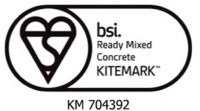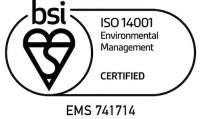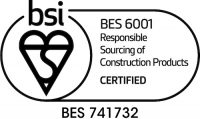In 2008, a new world record was set when vertical concrete pumping was taken to a height of 606 metres during the building of the Burj Dubai Tower. The technology required for pumping concrete vertically is phenomenal; the concrete has to be fluid enough to be pumped, but still usable when it gets to its destination. In addition, the pump needs to be capable of coping with the sheer weight of aggregate, water and cement.
The results, however, can be fantastic – see our roundup of 7 beautiful concrete structures.
The Pumps
There are two types of concrete pump commonly found, each using either a piston or peristaltic (squeezed tube) motion. The piston action requires rotary valves that can work around the particles of aggregate in the mix. The concrete moves in a series of pulses as the chamber of the pump empties, but the pipe remains constantly full. This type of pump is capable of shifting 130 cubic metres of cement in an hour using 20cm bore piping. The peristaltic pipes are driven by a revolving set of rollers and, although less powerful than the piston versions, are still capable of delivering an impressive 20 cubic metres of concrete an hour through 8cm pipes.
The action of the concrete pump has to be very effective, moving the entire contents of the chamber with each motion. If it doesn’t, there is the risk that any residual mix will start to harden, causing wear, or more serious damage. The flow itself has to take place at a minimal pressure, since if the mix is excessively compacted it will affect its quality; compression also increases the friction in the tube and slows the rate of delivery.
The Mix
Unfortunately, the best mix of concrete for a job and the easiest mix to pump are often not compatible. The higher the water content (the only pumpable component) the easier it is to process, along with a minimum of aggregate, but that may be way off a specification that requires good compressive strength and low shrinkage. Pozzolans, used as a cement replacement, help the flow as well as the other benefits that they bring to volumetric concrete quality. The use of gap-graded mixes, frequently used on visible surfaces, increases the wear and tear on the equipment and results in a mix that is more difficult to pump than well-graded volumetric concrete.
The Pipe
The absolute rule for vertical concrete pumping is that the diameter of the pipe must be at least three times the size of the largest particles in the aggregate. Although light weight, aluminium should be avoided as this reacts with the mix to form hydrogen gas – bubbles of which will weaken the finished structure. The type of pipe chosen may well depend upon the length of the project; to be most cost-effective the pipe should last until the last concrete has been poured but not much longer, minimising its cost to produce and removing the added costs of cleaning afterwards.
Hose Whipping
When pumping concrete vertically it is important the operative makes sure air does not get into the line, particularly the start of pouring, when the pipe is opened to clear a blockage, or if the feeder hopper is not kept topped up. If air does get in, the weight of the concrete in the line can compress the air to the point that when it is released it has an almost explosive force. This can cause the hose to move violently, which, with the weight of the concrete contained, can become dangerous, especially at height.
Vertical concrete pumping has enabled ever more ambitious building projects to be undertaken and increased speed and efficiency in more down-to-earth constructions. It requires a constant juggling of mix and machinery to achieve the desired results and, as such, should only ever be taken by professional concrete companies with a wealth of experience in vertical concrete pumping – such as the specialists here at EasyMix.
For more information on vertical concrete pumping – or any of our volumetric concrete services – simply get in touch with the friendly professionals at EasyMix today!



